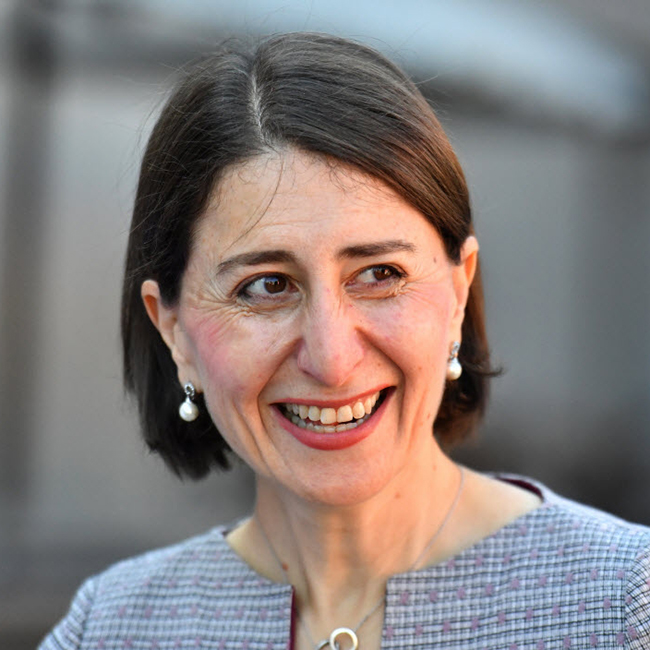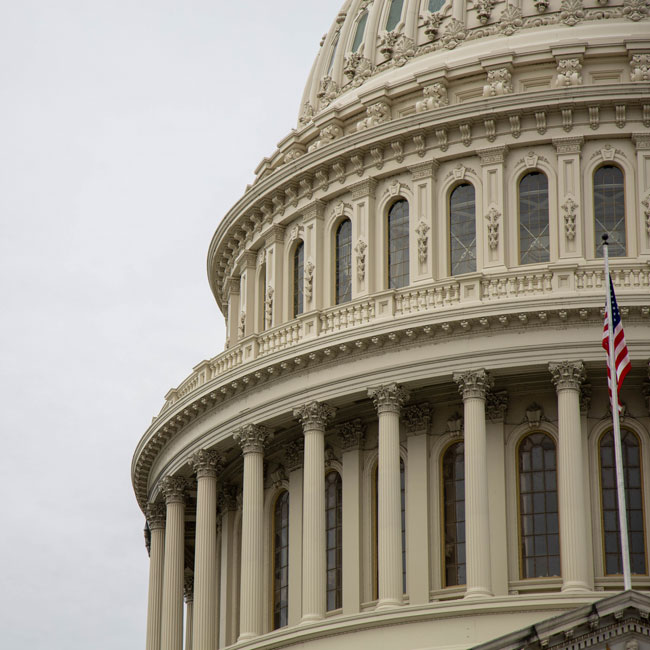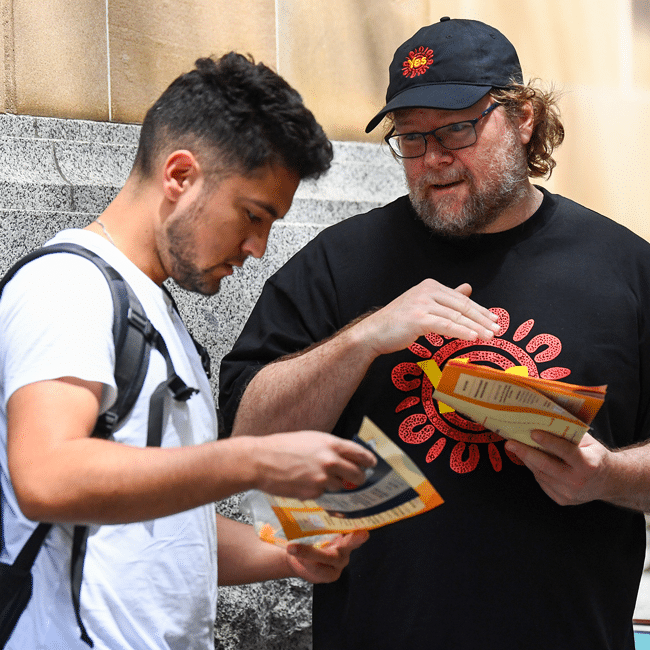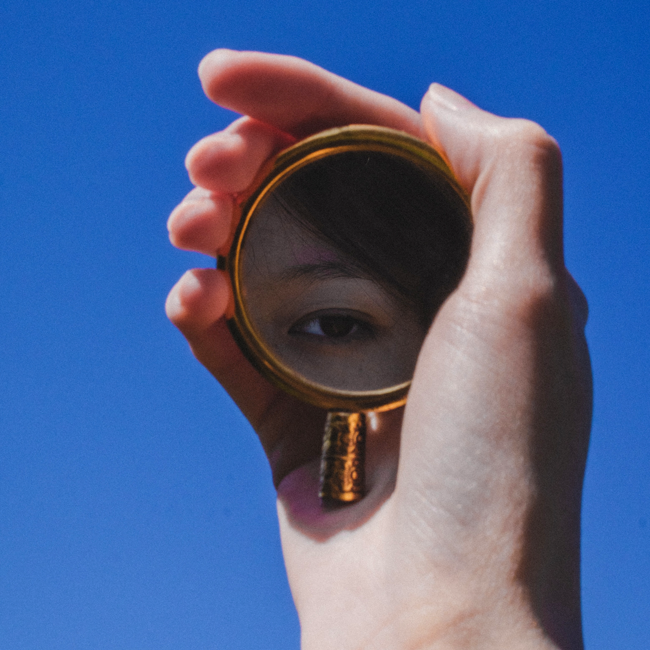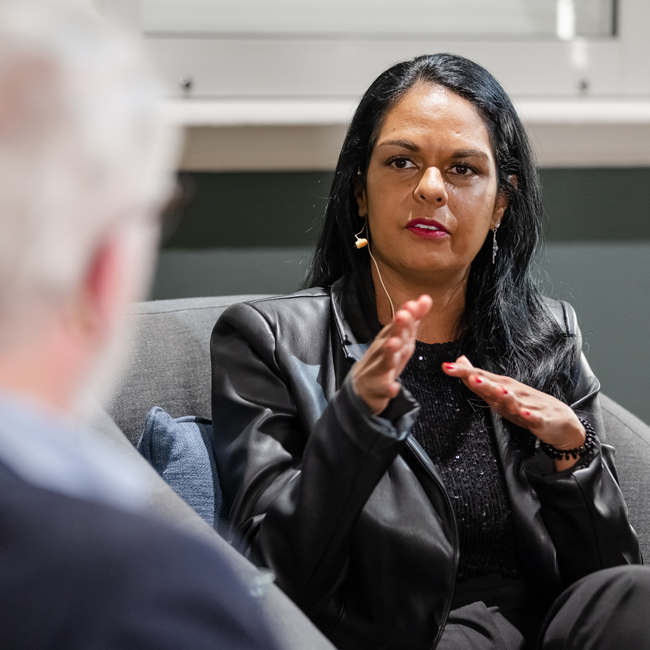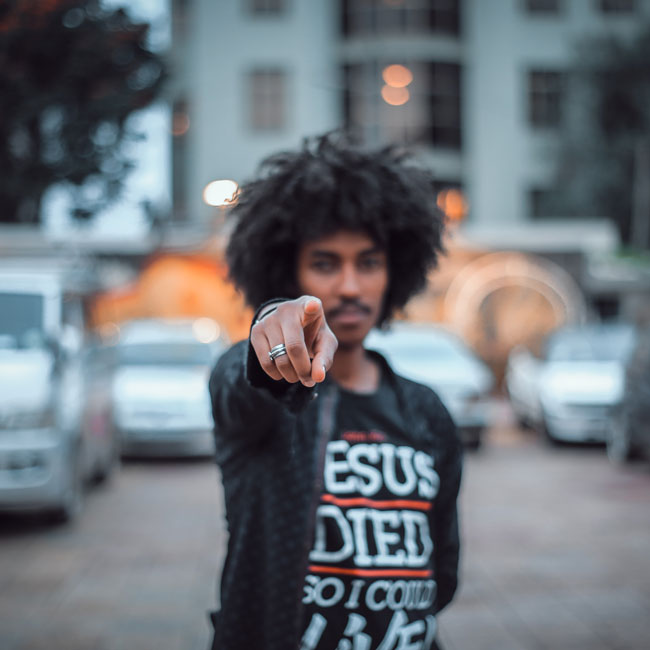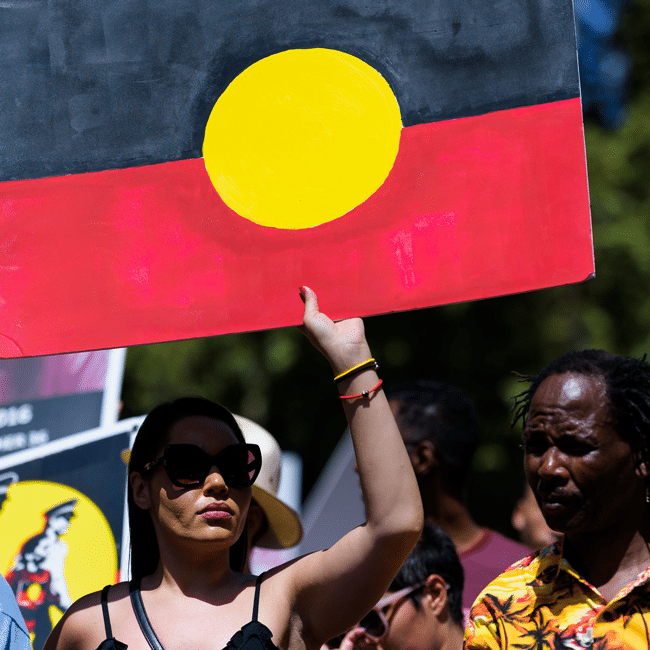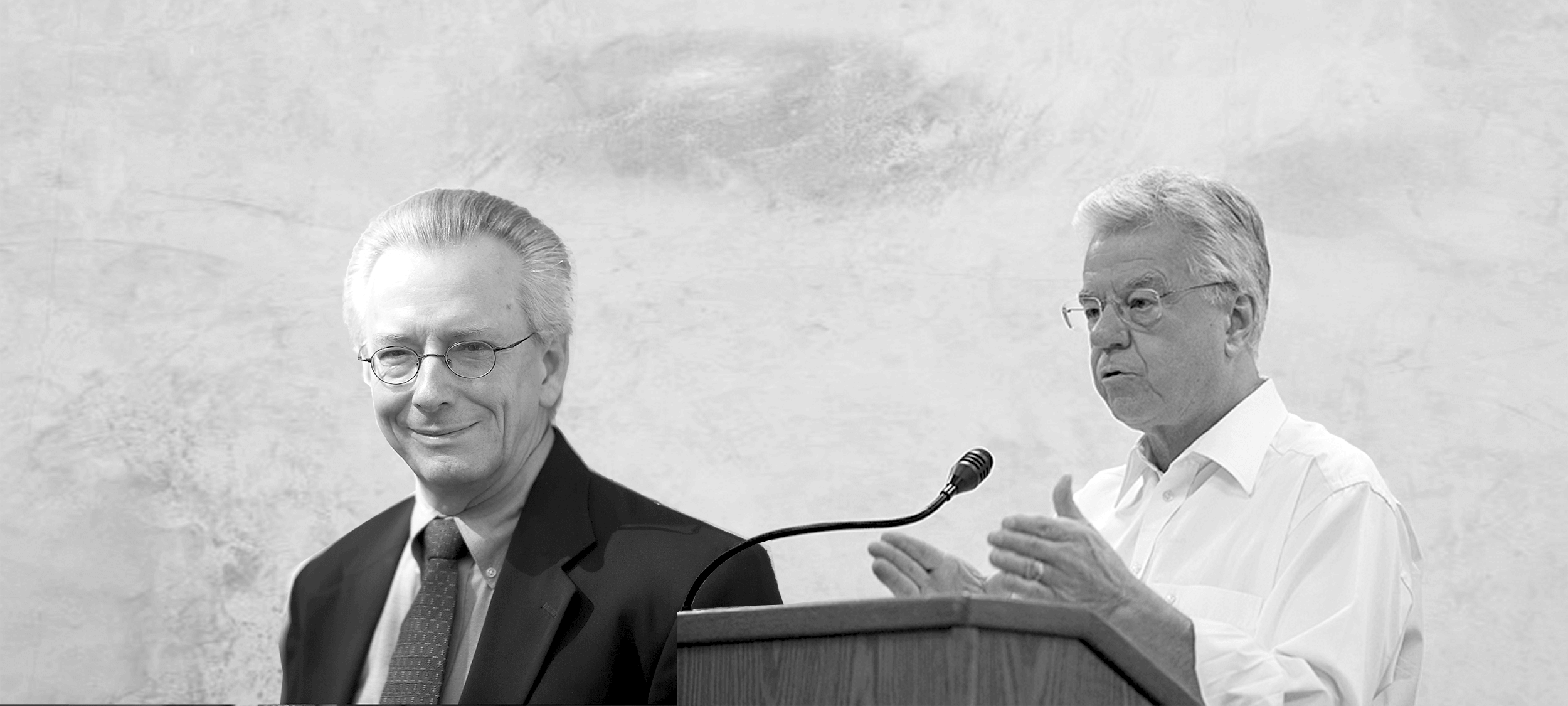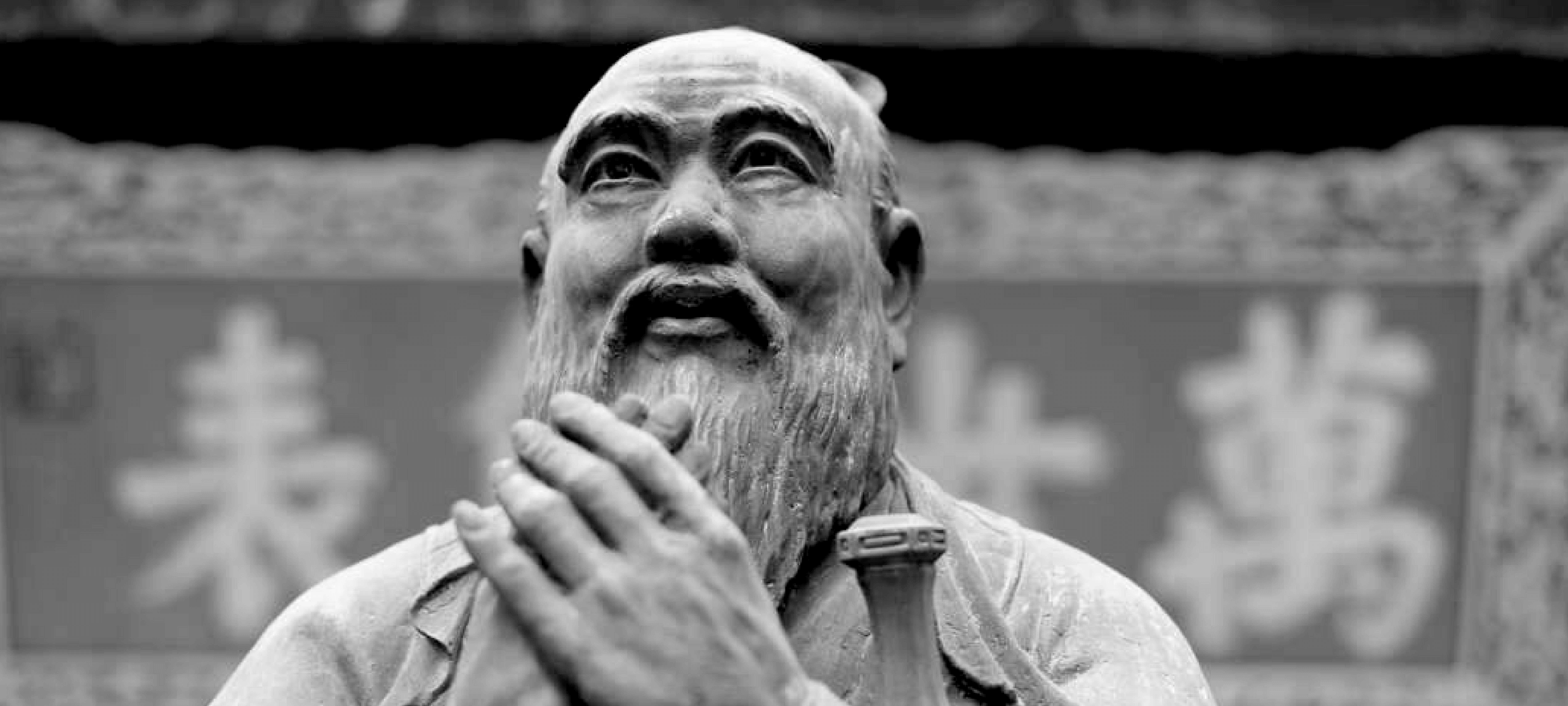Israel or Palestine: Do you have to pick a side?
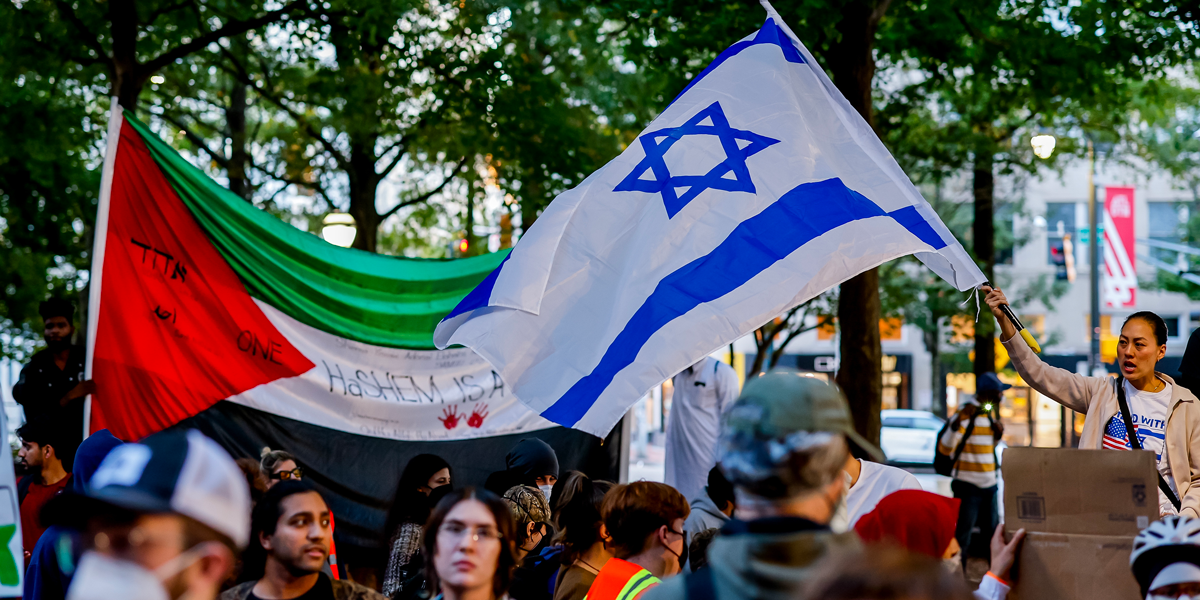
Israel or Palestine: Do you have to pick a side?
Opinion + AnalysisPolitics + Human Rights
BY The Ethics Centre 27 OCT 2023
We are inclined to pick a side in complex conflicts, but doing so can diminish our ethical point of view.
In the early hours of 7 October 2023, Hamas launched a barrage of rockets from Gaza into Israel while armed terrorists crossed the border and began a rampage of death and destruction targeting civilians, including children. In the days that followed, Israeli forces retaliated by blockading Gaza, cutting off food, electricity and water supplies, and began bombarding the densely populated city, killing thousands of Palestinian civilians, including children.
When our news screens are filled with footage of such horrors, our moral minds cry out for justice. But justice for whom?
One of the quirks of our moral minds is that we tend to see the world in terms of black and white or good and evil. If we hear about a heinous or unjust act, our sympathies go out to the victims while outrage inspires us to want the perpetrators to be punished. This sorts the world into two categories: the wronged, who deserve sympathy and protection, and the wrongdoers, who are morally diminished or even dehumanised.
Another quirk of our moral minds is that we struggle with ambivalence, which is the ability to see something as being both good and bad at the same time. Once someone – or a group – are painted as the wronged, it’s difficult to also perceive them simultaneously as being wrongdoers in some other capacity. Attempting to do so creates an uncomfortable state of dissonance, and the easiest way to resolve it is to dismiss the troubling thought and collapse things back into black and white.
On top of this we have our personal connections and affiliations, or a sense of shared identity that can cause us to feel solidarity with one side rather than the other. This in-group solidarity is then reinforced through shared expressions of grief and outrage. It is also policed, with any signs of sympathy for the “other side” drawing stiff rebuke.
This is all natural. It’s how our moral minds are wired. So, it’s no surprise that in the case of the Israel-Palestine conflict, many people have already picked a side. But just because it’s a natural inclination doesn’t mean it’s always a healthy one.
Picking a side can shrink our view, making us see the world through that side’s ethical lens and dismissing other possibly valid perspectives.
This is particularly apparent when we’re faced with gaps in the information we receive – as we often are during times of conflict. We tend to fill ambiguity with our own biases, and we seek out information to reinforce our view while discounting evidence to the contrary.
Picking sides can also prevent us from seeing the bigger ethical picture. And in the case of the conflict between Israel and Palestine, the bigger picture is a long history laced with ethical complexities.
However, there is another way. It requires us to acknowledge, but not necessarily follow, our moral intuitions, and instead step back to take a more universal ethical point of view. This is not the same as a neutrality that is indifferent to the claims of either side or to questions of right and wrong. It is taking the side of principle, which is a basis by which we can judge all parties.
Justice for all
Most ethical frameworks offered by philosophers are universalist, in the sense that they apply equally to all morally worthwhile individuals in similar situations. So, if you believe that it’s wrong to kill a particular individual because they’re an innocent civilian, then you should also believe that it’s wrong to kill any individual who is an innocent civilian.
You might justify that in consequentialist terms, such as by arguing that killing innocent civilians causes undue and irrevocable harm, and that the world is a better place when civilians are protected from such harm. You could equally justify it using a rights-based ethics, such as by arguing that all people have a fundamental right to life and safety.
While philosophers have a variety of views on which specific ethical framework or universal principles we ought to adopt, there are some principles that are widely accepted, with many being coded into the Universal Declaration of Human Rights. These include things like a right to life, liberty and security of person, a right to freedom of movement within the borders of one’s state, and that people shall not be arbitrarily deprived of property, as well as a right to the free expression of one’s religion.
The virtue of taking such a principled approach is that is gives us a bedrock upon which we can base our judgements of any action, agent or government. It promotes a sympathetic stance towards all suffering, and aims us towards justice for all, without shying away from condemning that which is harmful or unjust.
It might challenge our partisan feelings that favour the interests of one side over the other, but it urges us to condemn wrongdoing on any side, such attacks targeting civilians or waging war without ethical constraint.
A principled perspective also enables us to navigate complex ethical issues, such as saying that the Israeli occupation of Palestinian land might be unjust, but that it shouldn’t justify Hamas attacking civilians. Or that Hamas’s attacking civilians is clearly morally repugnant, but that shouldn’t justify the collective punishment of Gazans by Israel. And it can allow us to assert that Israel might have a right to defend its territory and citizens from attack, but it – indeed, all parties – must adhere to just war principles, such as proportionality and distinguishing between enemy combatants and civilians. And it ought to reinforce our commitment to seeing a lasting peace in the region, which will inevitably require some compromises on both sides.
Of course, even if everyone agreed on the same set of principles, there will still be substantial differences in interpretation or points of view. A principled stance must also acknowledge that there are fundamental incompatibilities between the interests and demands of both sides that no single ethical framework will be able to resolve without some kind of compromise. For example, when both sides claim certain sites as sacred, and demand exclusivity, there is no way to resolve that without compromise that will be deemed unacceptable to at least one side. However, such uncertainties and complexities don’t undermine the fact that the same universal principles ought to apply to all people involved.
Choosing to side with ethical principle rather than one side or the other is not without its challenges. It forces us to push back on some of our deep moral intuitions and sit with ambivalence and ambiguity. We might be admonished by both sides in the conflict for not backing all their claims, or called a traitor for criticising them. However, the strength is that we can respond to each of these challenges by resorting to the universal principles, compassion and desire for justice that underpins our views on both sides of the conflict.
While the internet and media landscape seem to urge us to take sides in any conflict, it is entirely possible – and often wise – to step back and apply a broader set of principles rather than fall in with a particular partisan perspective. Adopting such a principled stance doesn’t require that you have all the solutions to the conflict, it is sufficient that you have good reason to wish for a just and peaceful solution for all involved.
Image: AAP Photo / Erik S. Lesser
BY The Ethics Centre
The Ethics Centre is a not-for-profit organisation developing innovative programs, services and experiences, designed to bring ethics to the centre of professional and personal life.
Ethics in your inbox.
Get the latest inspiration, intelligence, events & more.
By signing up you agree to our privacy policy
You might be interested in…
Opinion + Analysis
Politics + Human Rights
Billionaires and the politics of envy
Opinion + Analysis
Business + Leadership, Politics + Human Rights
Berejiklian Conflict
Opinion + Analysis
Business + Leadership, Politics + Human Rights
No justice, no peace in healing Trump’s America
Opinion + Analysis
Politics + Human Rights
Orphanage ‘voluntourism’ makes school students complicit in abuse
Who are corporations willing to sacrifice in order to retain their reputation?

Who are corporations willing to sacrifice in order to retain their reputation?
Opinion + AnalysisBusiness + Leadership
BY Nina Hendy 23 OCT 2023
In an era where mud sticks like glue, corporate tolerance has waned to such a degree that the need to keep hard-fought reputations is outweighing respect for human fallibility.
Careers and hard-won professional reputations built over many decades can come tumbling down overnight after off-the cuff-comments or even private messages sent to a colleague are made public, overshadowing years of hard work.
And the corporations they work for often seek to condemn, seek a resignation and shuffle talent out the door than chalk it up as an error of judgment, forgive and move on.
Tasmanian Attorney-General Elise Archer was forced to resign after one leaked message to the media appeared to be an exasperated reference to victim-survivors of child sexual abuse. Archer was not given the opportunity to challenge the claims made against her and is adamant that the messages were taken out of context.
Another study found 312 news articles about people who had been fired due to a social media post. These included teachers fired after coming out as bisexual on Instagram, and a retail employee let go over a racist post on Facebook.
While racism was the most common reason workers were fired in these news stories, other forms of discriminatory behaviour included posts about workplace conflict, bad jokes, insensitive posts, acts of violence and even political content. Of course, there’s no doubt of dozens more cases that aren’t even made public.
Are companies too quick to condemn?
The blurred lines between knowingly behaving unethically at work and comments shared without our permission raises the question of whether corporations are too quick to condemn indiscretions in favour of their reputation. While public trust in elected officials is critical, it’s also important to remember that these officials are also human beings.
As workplaces are prioritising accountability and ethical standards to ensure safe and productive environments, too often we are seeing errors of judgement costing hard-working professionals their reputation, not to mention their future earning potential after they are ousted from their job.
It begs the question: What ever happened to an individuals’ right to make a mistake and for the rest of society not to leave them out in the cold forever? Have we come to a point where our inner thoughts and feelings shared in private are indicative of our ability to do our job?
Where we draw the line
Despite private messages being made public costing people their jobs and reputations, career coach Renata Bernarde believes that private messages should remain private and usually aren’t a true reflection of our ability to do our job.
“When leaked, we can see that private messages can offer glimpses into someone’s personal thoughts and feelings, which might be expressed without the filter they would use in a professional setting. That said, if private messages reveal behaviours or beliefs that directly contradict the values and responsibilities of their public role, it’s a valid concern. For instance, a diversity and inclusion leader advocating for equality should not have private messages showcasing prejudice.”
However, Bernarde urges corporations to avoid blanket penalties, saying we need to be cautious about using isolated messages out of context to vilify individuals. “It’s essential to consider the entirety of the person’s character and contributions,” she says.
The art of corporate forgiveness
There are occasional cases of corporate forgiveness. Western Australian man Cameron Waugh was charged with six counts of insider trading and was released on bail. He has since appointed the interim CEO of a company that’s obviously deemed his skills more valuable.
While forgiveness and the opportunity to secure a new job after misconduct is complex and multifaceted, human resources and emotional resilience expert Shane Warren says that it’s important that workplaces acknowledge that making a mistake pertains to the psychological and emotional harm caused by actions that violate one’s deeply held moral beliefs.
“Any doctrine of faith reminds us that human fallibility is an inherent part of our nature, and the capacity to make mistakes is universal. The idea that an individual who has ‘stuffed up’ should not be punished indefinitely for errors resonates with our core principles of fairness and modern desire to embrace personal growth.”
However, Warren admits that balancing the need for accountability with the recognition of our humanity can be challenging. Nevertheless, fostering a culture of learning, growth and restorative justice can help strike a more equitable balance between accountability and compassion in any workplace, he says.
The process of forgiveness and reintegration into the workforce should ideally involve steps such as acknowledging wrongdoing, seeking rehabilitation or counselling, demonstrating genuine remorse and showing a sustained commitment to personal growth and ethical behaviour. The timing for a new job may vary depending on individual circumstances and the severity of the misconduct, he says.
“Perhaps instead, society needs to bear in mind that everyone is fallible. If indiscretions or mistakes happen, when addressed and an apology is allowed to be given, it can lead to greater resilience, better understanding and personal and professional development.”
Ethics in your inbox.
Get the latest inspiration, intelligence, events & more.
By signing up you agree to our privacy policy
You might be interested in…
Opinion + Analysis
Business + Leadership
Do Australian corporations have the courage to rebuild public trust?
Opinion + Analysis
Business + Leadership, Society + Culture
Access to ethical advice is crucial
Opinion + Analysis
Business + Leadership
Why we need land tax, explained by Monopoly
Opinion + Analysis
Business + Leadership, Relationships, Science + Technology
Are we ready for the world to come?
BY Nina Hendy
Nina Hendy is an Australian business & finance journalist writing for The Financial Review, The Sydney Morning Herald, The Age and The New Daily.
But how do you know? Hijack and the ethics of risk

But how do you know? Hijack and the ethics of risk
Opinion + AnalysisRelationshipsSociety + Culture
BY Joseph Earp 18 OCT 2023
Hijack, the new Idris Elba-starring miniseries, opens with every airline passenger’s nightmare – a bullet, found in the bathroom of a plane. Within moments, things go from bad to worse.
The ragtag group of heroes, a collection of passengers led by Sam Nelson (Elba), a corporate business negotiator, find themselves in the middle of a hijacking plot, surrounded by criminals, and unable to get help from those down on the ground who, we quickly learn, are ensnared in the plot themselves.
Such a format is not necessarily new – television and film have been littered with stories of hostile airline takeovers, from the big brash action of Air Force One, to the real-world horror of United 93, a tragic retelling of the 9/11 attacks. But what sets Hijack apart is its rapidly escalating sense of dread. Time and time again, Sam and his fellow passengers are faced with impossible decisions, and time and time again, they are foiled. That opening nightmarish feel only deepens – you know those dreams where everything goes wrong; where you are powerless; where the adversaries keep mounting? That’s key to Hijack’s tone, a story of ever-escalating horrors, through which Sam must try to keep himself – and his ethical code – alive.
Indeed, this mounting sense of risk means that Hijack poses an interesting question about ethical deliberation under fire. Sam, who is well-versed in negotiation, but not well-versed in negotiation where the stakes are so high, must repeatedly make rapid-fire decisions. Does he send a text to his wife? Does Sam continue his attempted revolt after he discovers that the hijackers know who his family are, and will kill them if anything goes wrong? Does Sam rush the cockpit? And how responsible will he ethically be if he fails? How much blood is on his hands?
Decision making turned up to 11
The problem of ethical decision-making under fire is essentially the problem of the difference between theory and practice. Sit people down and ask them what the right thing to do is, give them time, don’t hurry them, and psychological studies show that they’ll have a better chance of choosing the ethical answer.
In a famous experiment known as The Good Samaritan, a group of priests-in-training were told to head across a university campus to deliver a speech on the importance of helping others. Some of these priests were given ample time to make it across the campus; others were told they had to rush. Along their trip, the experimenters planted a person in need – an actor, who feigned being sick, and asked for help. The majority of those priests who had been told they weren’t in a rush stopped to help. But the priests who had to move fast, and were stressed and distracted, largely ignored the actor – even though they were literally on their way to give a speech on how to care for their fellow human beings.
The experiment shows that the more that pressure increases – particularly time pressure – the less likely we are to do the right thing. Which poses a significant problem for ethical training. How can you fight against the forces of a chaotic world?
Philosopher Iris Murdoch was aware of the everyday pressures that we meet constantly. For that reason, she considered ethical training a process which prepares us to act unthinkingly. The more we make the right decisions when we do have time, the more likely we are to shape our instincts to be more ethical, and therefore act virtuously when we don’t have time. In this way, Murdoch collapses theory into practice, treating them not as divorced from one another, but with theory informing practice.
Which is a view that Hijack supports. Sam’s cushy day job has given him an unusual set of skills that he himself didn’t even realise that he had. All that work he conducted for years? It was training for this moment.

The ethics of risk
A related issue pertaining to theory and practice is the unknowability of the future. Thought experiments and ethical dilemmas conducted theoretically can have clear right or wrong answers, based on outcomes. But when we’re actually moving through the world, we’re blind to these outcomes. More often than not, we’re stumbling through the ethical world, making decisions based on the hope that things will work out, but never actually knowing if they will.
This is the ethics of risk, extensively covered by the philosopher Sven Ove Hansson. According to Hansson, “risk and uncertainty are such pervasive features of practical decision-making that it is difficult to find a decision in real life from which they are absent.”
Hansson’s solution to this problem is to consider “fair exchanges of risk.” He forgoes the idea that we will never be perfect moral creatures. Because the world is uncertain, we can only ever move towards good ethical actors. There’s no way that we can ever always do the right thing, and nor should we expect ourselves to. Instead, we must try. That is the important part.
So it goes in Hijack. Sam is a flawed main character, who frequently makes errors while trying to save those around him. But we, as audience members, forgive him for this. We don’t judge him for the plans that fail. We see his movement towards good behaviour, and that’s what matters.
In that way, we can also see theory and practice moved out of contention with each other. Theory is the goal; practice is the action. We’ll never live in a fully theoretic state. But what Hijack tells us, is in the face of that impossibility, we should not throw up our hands. We should instead keep moving towards theory – a spot on the horizon that is forever escaping us, but that we never stop chasing.
Ethics in your inbox.
Get the latest inspiration, intelligence, events & more.
By signing up you agree to our privacy policy
You might be interested in…
Opinion + Analysis
Relationships, Science + Technology
We are being saturated by knowledge. How much is too much?
Explainer
Society + Culture, Politics + Human Rights
Ethics Explainer: Just Punishment
Explainer
Relationships
Ethics explainer: The principle of charity
Explainer
Relationships
Ethics Explainer: Existentialism
BY Joseph Earp
Joseph Earp is a poet, journalist and philosophy student. He is currently undertaking his PhD at the University of Sydney, studying the work of David Hume.
Big Thinker: Karl Marx

Karl Marx (1818-1883) was a philosopher, economist, and revolutionary thinker whose criticisms of capitalism and breakdowns of class struggle continue to influence contemporary thought about economic inequality and the worth of individual labour.
He was not only a prominent figure in the world of philosophy but also a key player in economic and political theory. Marx’s life and work were deeply intertwined with the tumultuous historical backdrop of the 19th century, marked by the Industrial Revolution and the rise of capitalism.
Born in Trier, Prussia (now in Germany), Marx began with a focus on law and philosophy at the University of Bonn and later at the University of Berlin. During his time in Berlin, he encountered the ideas of G.W.F. Hegel, whose methods significantly influenced Marx’s own philosophical approach.
In collaboration with Friedrich Engels, Marx developed and refined his ideas, culminating in some of the most influential works in the history of political philosophy. For example, his infamous The Communist Manifesto (1848) and Das Kapital (1867, 1885, 1894).
Historical materialism and class struggle
One of Marx’s central ideas was historical materialism, a theory that analyses the evolution of societies through the lens of economic systems. According to Marx, the structure of a society is primarily determined by its mode of production: the ways commodities and services are produced and distributed, and the social relations that affect these functions. In capitalist societies, the means of production are privately owned, leading to a class-based social structure separating the owners and the workers.
Marx’s analysis of class struggle underscores the ethical imperative of addressing economic inequality. He argued that under capitalism, the bourgeoisie (owners of the means of production) exploit the proletariat (the working class) for their own profit. This exploitation, he claims, is the engine that drives the capitalist system, where workers are paid less than the value of their labour while the bourgeoisie reap the profits. This exploitation also results in alienation, where workers are estranged from the full effects of their labour and, Marx argues, even from their own humanity.
Marx’s arguments call for a reevaluation of the inherent fairness of such a system. He questions the morality of a society where wealth and power are concentrated in the hands of a few while the masses toil in poverty. This is an ethical challenge that continues to resonate in contemporary discussions about income inequality and social justice.
Marx’s critique challenges us to consider whether a society that values profit and efficiency over the well-being and fulfillment of its members is ethically justifiable.
To address this concern, Marx envisioned a classless society, where the means of production would be collectively owned. This transition, he believed, would eliminate the inherent exploitation of capitalism and lead to a more just and equitable society. While the practical realisation of this vision has proven challenging, it remains a foundational ethical ideal for some, emphasising the need to confront economic disparities for the sake of human dignity and fairness.
Critique of capitalism and commodification
Marx’s critique of capitalism extended beyond its class divisions. He also examined the profound impact of capitalism on human relationships and the commodification of virtually everything, including labour, under this system. For Marx, capitalism reduced individuals to mere commodities, bought and sold in the labour market.
Marx’s critique of commodification highlights the importance of valuing individuals beyond their economic contributions. He argued that in a capitalist society, individuals are often reduced to their economic worth, which can erode their sense of self-worth and dignity. Addressing this ethical concern calls for recognising the intrinsic value of every person and fostering functions in societies that prioritise human well-being over profit.
The communist vision
Marx’s ultimate vision was communism, a classless society where resources would be shared collectively. In such a society, the state as we know it would wither away, and individuals would contribute to the common good according to their abilities and receive according to their needs.
This communist vision raises questions about the ethics of property and ownership. It challenges us to rethink the distribution of resources in society and consider alternative models that prioritise equity and communal well-being. While achieving a truly communist society might be complex or even out of reach, the aspiration of creating a world where everyone’s needs are met and individuals contribute to the best of their abilities is still a general ethical ideal many people intuitively strive for.
Despite this, Marx’s ideas have faced much criticism. Many believe that a classless society with a centralised power risks authoritarianism, Marx’s economic planning lacked detail, communism goes against human nature of self-interest and competition, and historical and contemporary communist systems face large practical challenges.
In spite of, and sometimes because of, these challenges, Marx’s ideas continue to spark ethical discussions about economic inequality, commodification, and the nature of human relationships in contemporary society. His legacy serves as a reminder of the enduring importance of grappling with questions of justice, equality, and human dignity in our ever-evolving social and economic landscapes.
Ethics in your inbox.
Get the latest inspiration, intelligence, events & more.
By signing up you agree to our privacy policy
You might be interested in…
Reports
Business + Leadership
Trust, Legitimacy & the Ethical Foundations of the Market Economy
Opinion + Analysis
Health + Wellbeing, Business + Leadership
Teachers, moral injury and a cry for fierce compassion
Opinion + Analysis
Business + Leadership
Leaders, be the change you want to see.
Opinion + Analysis
Business + Leadership, Politics + Human Rights, Relationships
It’s time to increase racial literacy within our organisations
BY The Ethics Centre
The Ethics Centre is a not-for-profit organisation developing innovative programs, services and experiences, designed to bring ethics to the centre of professional and personal life.
Now is the time to talk about the Voice

The Yes campaign is failing. If nothing changes soon, then October 14 will see constitutional reform fail, setting back recognition and reconciliation by years, if not decades.
And no amount of impassioned speeches by politicians, mass rallies by the Yes faithful, uplifting advertisements or – dare I say – editorial columns are likely to shift the needle towards Yes.
This is because voters who are currently unsure or leaning towards No have tuned out the “official” platforms. Their trust in mainstream media outlets has collapsed to single digit figures. It’s not even that they’ve switched to social media. It turns out that the only ones who have their ear are friends, family and colleagues. In this age of mass cynicism and social media schisms, it’s good old-fashioned relationships that still matter.
So, if you believe in the Voice, as I do, if you believe it represents an opportunity for Australia to take meaningful steps towards reconciliation with First Nations peoples, and if you believe it could be a stepping stone to a more unified Australia that each of us can be proud of, then your time to act is now.
But how? The key is to leverage the power of relationships and dive into conversations with your friends and relatives, especially people over the age of 55, who are currently the most likely to vote No. That’s your parents and grandparents, aunts and uncles, or if you’re in that age group yourself, your childhood friends or neighbours.
If the prospect of starting a “political” conversation with family members fills you with dread, that’s understandable. These conversations often succumb to pitfalls that only increase animosity and polarisation. But get them right and they can be transformational. If you’re brave enough to strike up a conversation over the dinner table, here’s how to do so constructively. In fact, these tips can help you have better conversations regardless of how you intend to vote.
First: show respect. It’s all too easy (and, in some circles, encouraged) to believe that those who disagree with us must be either stupid or malicious. Sometimes they are. But signalling disrespect is a surefire way to kill any possibility of persuasion. Even the faintest whiff of disrespect triggers defensiveness, and when that happens, constructive conversation is over.
One way to show respect is to hold your tongue and listen – really listen. Often, people get belligerent because they don’t feel heard. That means two of the biggest tools in your arsenal are your ears. Just listening carefully, asking a few questions and repeating back a summary of what they have said can be transformative. It makes them feel heard and it gives you a fighting chance of understanding where they’re coming from.
Do this before you’ve shared your views. Our natural tendency when we hear someone say something we don’t agree with is to immediately open our mouths and tell them that we think differently. But this sets you at loggerheads from the outset. Instead, hold back. Hear them out and show you’re interested into getting to the bottom of the matter. That way it’s not a tug of war between the two of you but one where you’re on the same side pulling against ignorance.
While listening, you’re likely to hear them offer reasons to support their view. Some will be authentic, but many will be post-hoc rationalisations of deeper unstated motivations. You can spot a post-hoc rationalisation because when you show that it’s false, it doesn’t change their mind. That means it was never the real motivation for their beliefs, just a distraction.
The trick is not to challenge or fact check post-hoc rationalisations head-on but to change the way they perceive the issue in the first place. Once you’ve generated enough goodwill, offer an alternative perspective on the issue. You don’t need to encourage, let alone demand, they adopt your perspective, just offer it as your reason for voting the way you intend to.
You’re nearly done. If you’ve made it this far, you’ve done just about all anyone can do in a single conversation. Thank them and move on to something else. Let them mull over your perspective, and perhaps in the next conversation you might be able to go deeper. Minds rarely change in a single sitting.
Of course, there will be times when the conversation goes off the rails. Maybe your discipline cracks and you scoff at one of their remarks. Perhaps they refuse to engage in good faith. Maybe they just want to troll you to get a reaction. If any of these happen, back out. Focus instead on reinforcing the relationship based on other shared values – family, sport, food, whatever it is that brings you together – so perhaps in the next conversation they won’t feel the need to get defensive, or offensive.
Good conversations, particularly persuasive ones, take work. But it is possible to avoid the worst pitfalls and have a constructive discussion. If even a few unsure voters are swayed, it could shift the tide of the referendum. And given the Voice is about being heard, it’s rather fitting each of our voices could help make the difference.
An edited version of this article appears in The Sydney Morning Herald.
Image: AAP Image/Jono Searle
For everything you need to know about the Voice to Parliament visit here.
Ethics in your inbox.
Get the latest inspiration, intelligence, events & more.
By signing up you agree to our privacy policy
You might be interested in…
Opinion + Analysis
Relationships
Ask an ethicist: How do I get through Christmas without arguing with my family about politics?
Explainer
Relationships
Ethics Explainer: Conscience
Opinion + Analysis
Relationships
It takes a village to raise resilience
Opinion + Analysis
Relationships, Society + Culture
5 Movies that creepily foretold today’s greatest ethical dilemmas
BY Dr Tim Dean
Dr Tim Dean is Philosopher in Residence at The Ethics Centre and author of How We Became Human: And Why We Need to Change.
Would you kill one to save five? How ethical dilemmas strengthen our moral muscle

Would you kill one to save five? How ethical dilemmas strengthen our moral muscle
Opinion + AnalysisRelationships
BY The Ethics Centre 6 OCT 2023
Ethical dilemmas are, by their nature, uncomfortable or difficult to tackle, but they can also teach us a lot about our own values and principles and prepare us for an ethically complex world.
You’re about to take a major exam that will determine whether you get accepted into a potentially life-changing course. But you hear that there’s a leaked copy of the exam paper doing the rounds, and other students are studying it carefully. There are only a precious few spots available in your desired course, and if you don’t also sneak a peek at the leaked exam paper, you are likely to miss out. Should you cheat by looking at the leaked exam paper, given you know other students are doing the same?
How about if you found out that the company you work for was partnering with an overseas contractor known for running sweatshops and flouting labour laws, meanwhile your company’s branding is all about how ethical and sustainable it is. Would you speak out to management, or on social media, even if doing so might cost you your job and income?
If these scenarios give you pause, you’re not alone. Each represents a different kind of ethical dilemma we might come across, and by their nature they can be highly unsettling and difficult – if not impossible – to resolve in a way that satisfies everyone involved.
But what makes something an ethical dilemma? It’s important to note that an ethical dilemma is not a simple question of doing the ‘right’ thing or the ‘wrong’ thing, like whether you should lie to cover up for something bad that you did.
A genuine ethical dilemma arises when there is a clash between two values (i.e., what you think is good) or principles (i.e., the rules you follow). Or it can be a choice between two bad outcomes, like knowing that whatever you do, someone will get hurt.
That’s what makes them so uncomfortable; we feel like whatever choice we make will involve some kind of compromise.
All in the mind
One way to prepare yourself to face real-world ethical dilemmas is to strengthen your moral muscle by practicing on hypothetical scenarios – a staple of philosophy classes.
Consider this: you’re the captain of a sinking ship, and the lifeboat only has room for five passengers. Yet there are seven people aboard the ship, including yourself. Whom do you choose to board the lifeboat? The pregnant woman? The ageing brain surgeon? The fit young fisherman? The teenage twins? The reformed criminal who is now a priest? Yourself?
Or how about this: you’ve just started your shift as the only surgeon in a small but high-tech hospital. As you walk into your ward, you’re presented with five dying patients. You know nothing else about their personal details except that each is suffering from a different organ failure. Without assistance, all will die within 24 hours. However, at that moment, a healthy patient is wheeled in for an unrelated minor procedure. You also know nothing about their personal circumstances, but you do know they have five perfectly healthy organs. Were you to allow that patient to die (as they will without treatment) you know you could save the lives of the other five dying patients. Would you allow one to die to save five?
Each of these scenarios is carefully constructed to put pressure on your ethical intuitions and force you to make difficult decisions.
Tackling a hypothetical dilemma gives you an opportunity to reflect on your own values and principles, and search for good reasons to justify your choices.
Even if the hypothetical situation is absurdly unreal, you can still learn a lot about yourself and your ethical stance by considering how you would act in these cases.
Your first impulse might be to try and change the circumstances to eliminate or minimise the dilemma. We might speculate that we could squeeze another person on the lifeboat, or that the organ transplants may not succeed, and that might make our decisions easier. This is entirely natural – and sensible – especially because dilemmas in the real world are rarely as clear cut. But dodging the dilemma misses the point of the exercise.
You might decide that a consequentialist approach is the best one for the lifeboat scenario, causing you to pick the people who might end up leading the richest lives or having the most positive impact on others. But you might decide that a deontological approach is most appropriate for the surgeon’s dilemma, arguing that it’s inherently wrong to withhold treatment from an ‘innocent’ patient, even if it ends up saving lives.
It’s important to remember that hypothetical dilemmas like this are designed so that there’s likely no simple answer that will satisfy everybody. Even reasonable people can disagree about what course of action to take. That’s fine. The important bit is not really the answer you come to but the reasons you give to support it. That’s what ethics is all about: finding good reasons to act the way we do.
Most of us are likely to go through life without ever having to put people in lifeboats or contemplate the death of one to save five, but by testing ourselves with these dilemmas we can build our ethical muscles and be more ready to face other dilemmas that world could throw at us at any time.
If you’re struggling with a real-life ethical dilemma, it can be tough finding the best path forward. Ethi-call is a free independent helpline offering decision-making support from trained ethics counsellors. Book a call today.
Ethics in your inbox.
Get the latest inspiration, intelligence, events & more.
By signing up you agree to our privacy policy
You might be interested in…
Opinion + Analysis
Relationships
The new normal: The ethical equivalence of cisgender and transgender identities
Opinion + Analysis
Relationships
A guide to ethical gift giving (without giving to charity)
Opinion + Analysis
Politics + Human Rights, Relationships
A new era of reckoning: Teela Reid on The Voice to Parliament
Opinion + Analysis
Politics + Human Rights, Relationships
Is it wrong to care about Ukraine more than other wars?
BY The Ethics Centre
The Ethics Centre is a not-for-profit organisation developing innovative programs, services and experiences, designed to bring ethics to the centre of professional and personal life.
When identity is used as a weapon

When people reduce an artist to one aspect of their identity, whether it be gender, ethnic or religious, it diminishes their humanity.
Identity is indelibly linked to our individual and collective places in the world. It is a marker, across many classifications, that creates distinctions that can help or harm us. But should it have such power? Is there any neutrality to how we create for public consumption, and if not, how can there be neutrality in how these are critiqued? Even with the cultural, social, sexual and other differences, surely there is acceptance that stories do – and should – have universal value?
A few years ago, Ruby penned an influential essay noting that, sometimes, white arts reviewers seemed unable or unwilling to see past ethnicity in literary criticism. In particular, there was an apparent tendency to take everything an Arab artist says literally, as if style, metaphor, flair and all the other features of literary penmanship were simply beyond our capabilities. It was not an objection to white reviewers critiquing the work of non-white artists. It was simply asking: “How do we respond when white reviewers can’t understand our work fairly enough to critique it?”
It was disheartening to see, some years later, the same issue rear its head, again in the pages of prestigious literary journals, again taking an Arab author to task by refusing to accept his work as fiction and insisting it must be thinly disguised autobiography. This time, however, the criticism was spearheaded by other Arabs.
Acclaimed Arab-Australian poet and novelist Omar Sakr was the subject of a bizarre string of connected critiques of his debut novel Son of Sin, two of which were written by Arabic speakers. What links these essays is not an issue with Sakr’s narrative style, plot structure, or characterisation but a fixation on his personal life and method of transliterating Arabic expressions, with the latter dismissed as too crude and incorrect to pass muster as ‘genuine’ Arab storytelling. His credibility diluted under the more ‘authentically Arab’ gaze of these two reviewers, Sakr’s Arabness was put into question.
It was extraordinary to witness such a coordinated attack on someone’s identity, only for identity itself to then be used to mask the attack. The implication being that as an artist, Sakr’s identity is fair game, but as his critics, theirs is beyond reproach.
As two Arab women who have both been critiqued extensively and who have critiqued the work of others, we are no strangers to writing and talking about these issues. We do not hide our Arab heritage, how this has informed our work, and how we are perceived and treated by wider society.
But what we have to offer is also of value to non-Arabs. Both of us have tried, over many years, to normalise rather than ‘otherise’ our experiences as a minority.
We believed that in being open about our identity – and the backlash we receive for it – we would eventually be able to transcend, not the identity itself, but the defining role it too often plays in our professional as well as personal lives. To make it a part of us but not all of us so that we may break down rather than reinforce the figurative walls that separate us.
Ruby’s portfolio of media work includes more than a decade of arts criticism, political analysis, and feature articles on everything from mental health to homelessness to pop culture. It is her work on race, however, that attracts the most attention and spurs the most backlash. Often, when critics accuse us of “making everything about race,” they are simply revealing their own tendency to see us only in racial terms. Our input on general societal matters considered irrelevant, we are simultaneously expected to have nothing more than our identity to offer and then berated for offering it on our own terms.
There is an endless thirst for stories that confirm the oppressed Arab woman archetype, only for this archetype to then be used against us. A workplace manager once told Amal that her “difficulty” with authority had something to do with her upbringing and the men in her life, while another taunted her about her perceived (lack of) sex life. Even as a journalist reporting for trade publications she was reduced to her identity – and found wanting.
Defying these forced identity markers, Amal went on to write several books that traverse universal themes, from the divine and spiritual belief, to ageing and how we live. Her novels explore connection, love and personal evolution, all centring Arab women raised in Australia but who remain connected to the homeland, primarily Palestine. But the stories are not about this. Navigating dual worlds; these characters acknowledge but are not defined by their heritage. It is their reality and normality. They do not exist to address stereotypes but as characters in their own right. They just are, without apology or reduction or explanation.
Still, media coverage of her work often reverts to stereotype, accompanied by images of women in headscarves or headlines about Amal’s faith. Every image, every headline, seemingly there to remind us that, even when our work subverts it, we cannot outrun that archetype.
We are more than decades of trauma and displacement. We are not conflict. Our dispossession is not the definition of who we are, and what we can achieve. But in a social climate of such gatekeeping as to which Sakr was subjected, can we ever simply be writers or does our ethnicity mean we can only be Arab-Muslim ones? Must we write merely to educate and inform, only to live in fear of being deemed not Arab enough, or can we be creative storytellers in our own right?
For all the discourse about identity and discrimination, including the much-needed influx of historically marginalised voices, it seems that there is an attachment, both from the dominant society and from within these marginalised groups to maintain the status quo. Reducing us to the barest, stereotypical elements of our racial heritage – whether or not we wear a headscarf; if we transliterate “uncle” correctly – we are refused an existence outside of its constraints.
It is hard not to conclude that we are entering – if not already immersed in – a social landscape in which our identities are not lived but performed, and our existence is not normalised but capitalised upon.
How do we recalibrate so that we may embrace identity without being reduced to it? At the very least it requires an acknowledgement that we are not here to tick boxes with our difference. We tell stories not to meet the arbitrary standards of those who unethically wield identity like a cudgel but because humans always have. Our stories are not only cultural records but also historical ones, telling us where we have been and where we can go.
Ethics in your inbox.
Get the latest inspiration, intelligence, events & more.
By signing up you agree to our privacy policy
You might be interested in…
Explainer
Relationships
Ethics Explainer: Blame
Big thinker
Politics + Human Rights, Relationships
Big Thinker: Dennis Altman
Opinion + Analysis
Relationships
Get mad and get calm: the paradox of happiness
Explainer, READ
Relationships, Society + Culture
Ethics Explainer: Shame
BY Ruby Hamad
Ruby Hamad is a journalist, author and academic. Her nonfiction book White Tears/Brown Scars traces the role that gender and feminism have played in the development of Western power structures. Ruby spent five years as a columnist for Fairfax media’s flagship feminist portal Daily Life. Her columns, analysis, cultural criticism, and essays have also featured in Australian publications The Saturday Paper, Meanjin, Crikey and Eureka St, and internationally in The Guardian, Prospect Magazine, The New York Times, and Gen Medium.
Do Australian corporations have the courage to rebuild public trust?

Do Australian corporations have the courage to rebuild public trust?
Opinion + AnalysisBusiness + Leadership
BY Carl Rhodes 27 SEP 2023
Corporate Australia is having a rough time in 2023.
PwC made headlines for selling out Australian citizens by flogging details of the government’s tax avoidance schemes to potential corporate tax avoiders. Qantas has been raked over the coals for, amongst other things, lying to customers and illegally sacking workers. Elsewhere corporations are pilloried for scandalously excessive executive pay, Dickensian industrial relations standards, wilfully aggressive tax avoidance, and heartless profiteering.
Research by the market researchers at Roy Morgan recently revealed that the level of trust Australians have in corporations is at the lowest it has ever been since they started measuring it. The downward trend started with COVID but has been in free fall since the middle of 2022. Roy Morgan CEO Michelle Levine describes what is going on as the result of ‘moral blindness’ of corporations.
There is an apparent irony in play. Today’s corporations are accused of this moral blindness, while many publicly embrace ethics by taking increasingly active roles in important matters of public purpose and social impact. Corporations are weighing in on a variety of crucial political issues, such as the Indigenous Voice to Parliament, LGBTQIA+ rights, and the climate crisis.
Business as a force for good?
In the era of ‘woke capitalism’ the business world seems to feel little cognitive dissonance, let alone hypocrisy, about parading their ethical credentials in public while acting like ruthless and exploitative profiteers in the market. Being economically exploitative and socially progressive is the name of the game for many corporations.
The socially progressive position regards businesses as having the potential to be a ‘force for good’, especially by adopting progressive positions on social and environmental causes. Think of Qantas’ ‘pride flights’, PwC’s commitment to social impact, or the broad adoption of diversity and climate change initiatives by businesses of all kinds.
Many regard corporate engagement with political causes as being genuinely motivated by ethical care for their ‘stakeholders’. This view is not universal. Others see corporate activism as comprising of shallow, inauthentic and self-interested grandstanding. Between green-washing, woke-washing and virtue-signalling, corporations have been accused of using ethics to feather their own nests.
Yet others see corporate social and environmental engagement as incontrovertible evidence that CEOs have been held captive by radical left-wing activists. By this account weak-willed executives are being exploited by nefarious militants trying to use corporations as a Trojan Horse to infiltrate mainstream society.
The ‘vile maxim’ of corporate selfishness
Whichever position you might be aligned with, so-called ‘woke’ practices are in apparent contrast to the exploitative and ruthless competitive behaviours of companies like Qantas and PwC that have contributed to the demise of trust in corporations. When it comes to business, the ethical principle at play is akin to what, many years ago, economist Adam Smith condemned as the ‘vile maxim’. As he wrote in The Wealth of Nations back in 1776:
“All for ourselves and nothing for other people, seems, in every age of the world, to have been the vile maxim of the masters of mankind. As soon, therefore, as they could find a method of consuming the whole value of their rents themselves, they had no disposition to share them with any other persons.”
It is clear that many people running businesses today are enthusiastic followers of this vile maxim. To suggest this is ‘moral blindness’ can be misleading because (no matter how vile) there is an ethics at play here, and one that is widely accepted. Ayn Rand notoriously championed such an ethics as being beholden to ‘the virtue of selfishness’. By Rand’s account, pursuing self-interest is a valid, if not desirable, moral position. She stood against sacrifice as being a moral principle, instead seeing merit in “concern with one’s own interests”.
Free market capitalism was, for Rand, an ideal manifestation of her ethics. This all suggests that selfishness is not moral blindness, it is part of an ethical system that drives much business behaviour. It is also the ethics that is at the heart of Australia’s lack of confidence in the corporate world.
How to build trust
Between the twin poles of ‘woke capitalism’ and the ‘vile maxim’ we have something of a corporate identity crisis. Increasingly selfish profit-seeking in the economic sphere is matched with attestations to the pursuit of public good in the social sphere. That is not to say that all companies are vile or woke, clearly many are not. It is a fair call that enough of them are that it has led to a breakdown of public confidence in corporate Australia.
What does this all mean for how Australian corporations can build public trust? One answer is resolving their identity crisis by truly embracing and communicating the role of business in a liberal-democratic society. While businesses are responsible for returns on capital investment, that is neither their sole nor primary purpose. Neither is supporting progressive social positions without concern for the economy.
In its present condition Australian corporate capitalism is characterised by skyrocketing economic inequality, excessive executive pay, inflation fuelled by profiteering, and increasingly precarious employment. That Australian citizens do not trust corporations is an entirely rational assessment.
Corporate Australia’s challenge is to actively recognise and pursue its real social purpose. This purpose is about driving innovation and economic growth for shared prosperity, providing meaningful and secure jobs with decent pay, paying taxes that fund public services, as well as ensuring investors get a reasonable return.
Rebuilding trust is simple. What remains to be seen is which of Australia’s fallen corporations will have the courage to abandon their attachment to the vile maxim.
Ethics in your inbox.
Get the latest inspiration, intelligence, events & more.
By signing up you agree to our privacy policy
You might be interested in…
Opinion + Analysis
Business + Leadership, Politics + Human Rights
Why fairness is integral to tax policy
Opinion + Analysis
Business + Leadership
Making the tough calls: Decisions in the boardroom
Explainer
Business + Leadership, Politics + Human Rights
Ethics Explainer: Universal Basic Income
Opinion + Analysis
Business + Leadership
6 Things you might like to know about the rich
BY Carl Rhodes
Carl Rhodes is Dean and Professor of Organization Studies at the University of Technology Sydney Business School. Carl writes about the ethical and democratic dimensions of business and work. Carl’s most recent books are Woke Capitalism: How Corporate Morality is Sabotaging Democracy (Bristol University Press, 2022), Organizing Corporeal Ethics (Routledge, 2022, with Alison Pullen) and Disturbing Business Ethics (Routledge, 2020).
We are the Voice
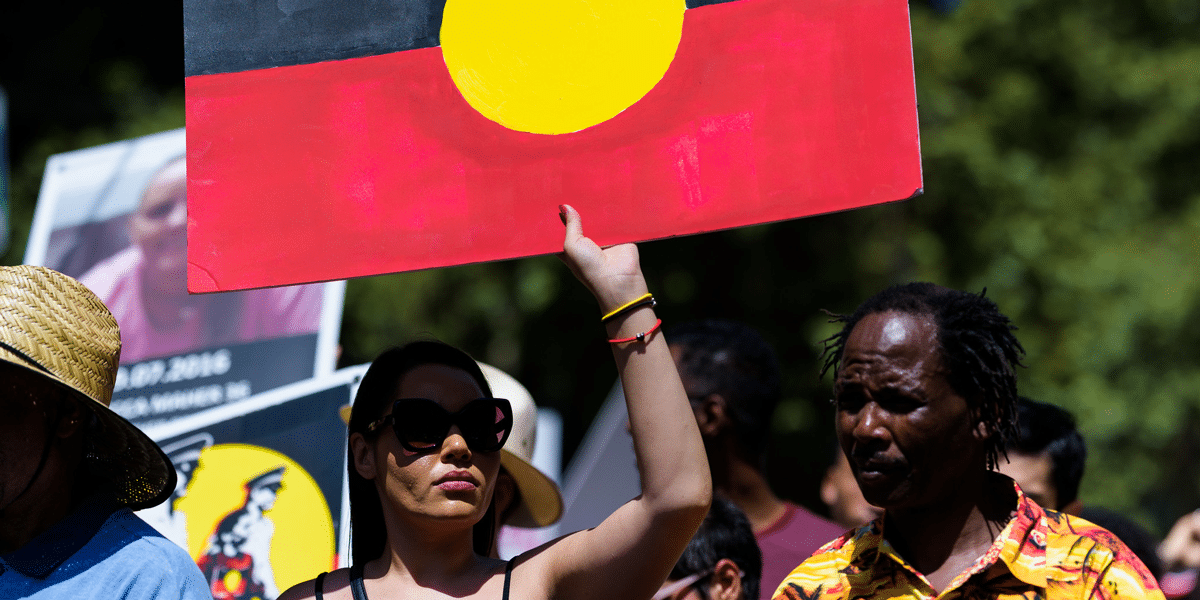
We are the voice! No monarch, no prime minister, no politician can decide how our democracy works. Only we, the people, voting as a whole, can resolve fundamental questions of how we will be governed – and by whom.
And so it has come to us to decide if and how to correct an historic injustice. First perpetrated by British colonists, through the doctrine of ‘terra nullius’ and then compounded by those who drafted the now repealed Section 127 of our nation’s most sacred political document, the Australian Constitution, our ‘original sin’ was to deny the prior existence of Indigenous peoples occupying, for millennia, the territories we now call Australia.
With mixed motivations – some virtuous and some vicious – the colonists sought to silence those whose lands they occupied. Guns, germs and steel – all did their work aided by policies of cultural suppression and assimilation. Yet, while sometimes just a whisper, at other times a mighty roar, the voices of our First Peoples have continued to echo across the lands and waters that make up our modern nation.
The descendants of our First Peoples have now asked us to repair the jagged rip in the fabric of our shared history. Their request is that this be done through the one means directly controlled by Australia’s citizens – an amendment to our Constitution. Their request is that this act of constitutional recognition be in the form of listening. They merely wish to be heard in relation to laws that directly affect their lives. That is all. No right of veto. No right to decide. Not even a right to determine how their voice is to be heard – for that is a matter reserved to Federal Parliament. Just a right to be recognised and heard as a distinct voice, amongst the many others, enshrined in our Constitution.
The debate about how to respond to this request has been intense – occasionally rancorous, confusing and ill-informed. So, here are some of the most important questions to have emerged during the course of debate:
Is the proposal to create the Voice racist?
No. The Voice is intended to recognise First Peoples based on their heritage not their race. As a whole, Aboriginal and Torres Strait Islanders carry within their veins the blood of many races. Some of the staunchest opponents of the voice acknowledge this as a personal truth. The proposed constitutional recognition does not privilege race, it merely recognises people based on their descent from those who held original sovereignty over the lands and waters that, collectively, make up Australia.
Is it not just as wrong to recognise descent as it is race?
Not necessarily so. The Act that establishes the Australian Constitution already applies this principle in Section 2 which reads:
The provisions of this Act referring to the Queen shall extend to Her Majesty’s heirs and successors in the sovereignty of the United Kingdom.
It is the principle of ‘descent’ that made the late Queen Elizabeth our monarch – as it makes Charles our King – as will it make his son and his son rule over us for as long as we remain a constitutional monarchy.
Aren’t Aboriginal and Torres Strait Islanders divided on this question?
Yes. Some, like critics, such as those amongst the Blak Sovereign movement, demand much more. Others fear that adding a new voice to our Constitution will perpetuate division between the descendants of the First Peoples and those without those ancestral connections. Even so, it is estimated that around 80% of First Nations people support the proposal to recognise them in the Constitution through the establishment of an enshrined Voice to parliament and Government.
However, we should no more expect unanimity amongst our First Peoples than we do amongst any other group. Indigenous people are as divergent in their political opinions as is any other group of Australians.
Besides, if you read the minutes of the earliest constitutional conventions it soon becomes evident that virtually every clause in the current Constitution has been the subject of fierce debate and heated controversies. So, disagreement about potential clauses in our Constitution is nothing new. It is the ‘bread and butter’ of constitutional development and reform.
Is there any guarantee that a Voice will rapidly improve the lives of First Nations people?
A ‘yes’ vote will not immediately solve the problems of post-colonial poverty and disadvantage that blights the lives of so many descendants of our First Peoples. Nor will every grievance be reconciled. But things will be better than before. There will be reasons to hope that progress is possible. Also, it’s pretty clear that what we have been trying up until now has not been working.
What if we change our mind about the need for a Voice?
If at some time in the future the job of listening is done and reconciliation is practically complete, then we can always undo what I hope we will do, together, on October 14th. That’s the most important fact about our Constitution. Nothing is set in stone. Everything can be remade in whatever form the citizens of Australia prefer, from time to time. If something does not work, we can just change it.
Isn’t it undemocratic to confer rights on some citizens that are not enjoyed by others?
Yes, but that is already how our Constitution operates. Australian citizens living in the NT and ACT only have four Senators representing their interests (2 each). Tasmanians have 12 Senators – despite having a population smaller than that of the combined territories. We do not hear too many protests about the ‘undemocratic’ nature of this arrangement.
However, what exactly is the ‘right’ being accorded to First Peoples? And is it a right denied to any others citizen? In fact, the proposed amendment merely confers a right to make representations – and nothing more – which is the same right enjoyed by any Australian citizen whether making representations as an individual, as a member of community defined by ethnicity, faith, location, etc.
How can we vote on constitutional change without first having all of the details about how it will work?
The Australian Constitution contains little detail about how the powers of the Australian Parliament and Government are to be exercised. The Constitution merely lists, in general terms, the various ‘heads of power’ (e.g. see Section 52) – and then leave the rest to parliament and the government to decide the detail. Exactly the same approach is being taken with the proposed Voice. If ‘certainty’ was a precondition for voting in favour of the Constitution, as originally drafted and proposed, then it would never have been passed. Why do we require certainty in this matter alone?
I will be voting ‘yes’ in the referendum. I will do so because I want us to fill a gaping hole in our Constitution. Those who drafted the original document it did a pretty good job. But they left out a crucial ingredient – and we are all poorer for that mistake. The Australian Constitution brought into existence a new nation by preserving the Colonial States in a federation. Even New Zealand was included! But they left out the oldest parts of our nation – the multiple sovereign Indigenous states that existed prior to colonisation. No smaller than places like Monaco, Lichtenstein and San Moreno, our pre-colonial states had well-defined borders, enforceable laws, governance structures and so on.
Like a car without a boot or, a birthday cake without candles or, a paragraph without punctuation, our Constitution works well enough. But it is not complete. It is time that this error was corrected by according our First Peoples a modest but honoured place in our Constitution.
I sincerely believe that the creation of the Voice will benefit the whole nation – not just its First Peoples. It will be a bridge that connects the ancient voice of our country with the modern. It will enable crossings in both directions; making us, as a people, both distinctive and whole.
We are the voice. We need utter just one word to create a new reality… ‘yes’.
For everything you need to know about the Voice to Parliament visit here.
Ethics in your inbox.
Get the latest inspiration, intelligence, events & more.
By signing up you agree to our privacy policy
You might be interested in…
Big thinker
Health + Wellbeing, Politics + Human Rights
Big Thinkers: Thomas Beauchamp & James Childress
Opinion + Analysis
Politics + Human Rights
Learning risk management from Harambe
Opinion + Analysis
Politics + Human Rights
Did Australia’s lockdown leave certain parts of the population vulnerable?
Opinion + Analysis
Business + Leadership, Politics + Human Rights
Could a virus cure our politics?
BY Simon Longstaff
Simon Longstaff began his working life on Groote Eylandt in the Northern Territory of Australia. He is proud of his kinship ties to the Anindilyakwa people. After a period studying law in Sydney and teaching in Tasmania, he pursued postgraduate studies as a Member of Magdalene College, Cambridge. In 1991, Simon commenced his work as the first Executive Director of The Ethics Centre. In 2013, he was made an officer of the Order of Australia (AO) for “distinguished service to the community through the promotion of ethical standards in governance and business, to improving corporate responsibility, and to philosophy.” Simon is an Adjunct Professor of the Australian Graduate School of Management at UNSW, a Fellow of CPA Australia, the Royal Society of NSW and the Australian Risk Policy Institute.
Enough and as good left: Aged care, intergenerational justice and the social contract
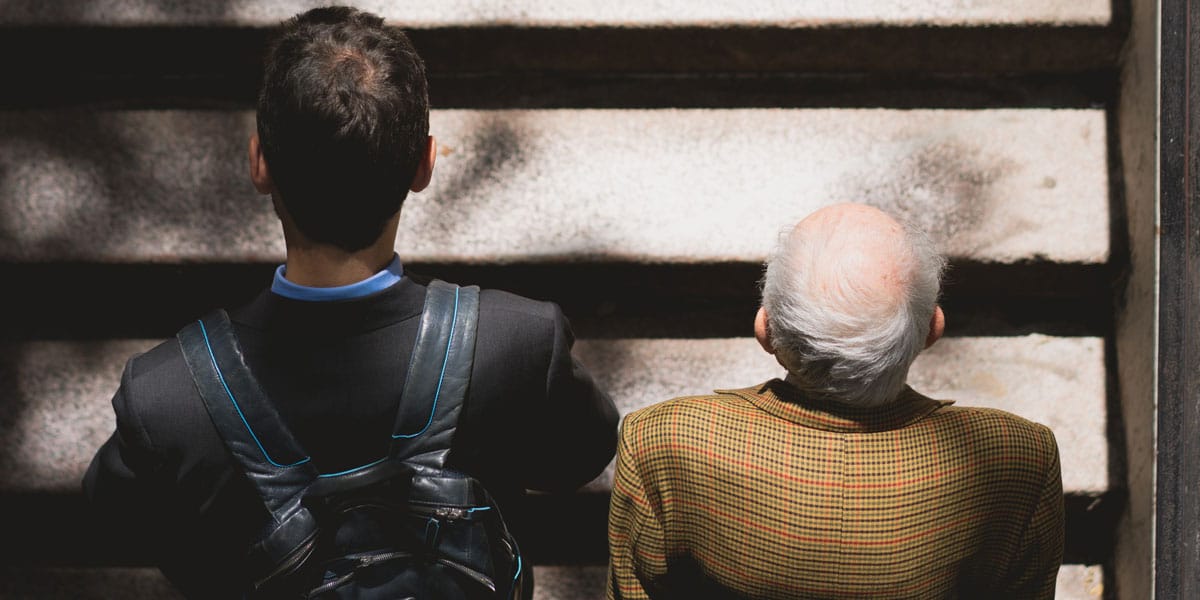
Enough and as good left: Aged care, intergenerational justice and the social contract
Opinion + AnalysisPolitics + Human Rights
BY Dr. Gwilym David Blunt 21 SEP 2023
Any fair society should ensure that everyone has dignity in old age. This isn’t some utopian aspiration. It is an ethical minimum required for us not collectively to hang our heads in shame.
But it isn’t easy and it certainly isn’t cheap.
The question of how to fund aged care is a can that has repeatedly been kicked down the road, because it will invariably require unpopular decisions. Recently the Albanese government has shown an inclination to tackle the difficult issue. Anika Wells, the aged care minister, has formed a task force to implement recommendations of the Royal Commission into Aged Care Quality and Safety. This includes the prospect of introducing an aged care levy, an option dismissed by the previous government.
On its face, a levy seems sensible. Those people earning money ought to be more able to pay than those who are no longer in work. Even if, in the future, these working people do not need to use public aged care, it acts as an insurance policy for them and, on a more fundamental level, it satisfies our ethical obligations to protect the most vulnerable people in our society. Yet, the idea of a levy isn’t popular, which isn’t surprising: people generally don’t like higher taxes. However, scepticism and even anger over the prospect of a new levy doesn’t necessarily come from a place of selfishness.
A levy would affect young people most and they will likely resent the imposition. We are not talking about solipsistic Millennials and Zoomers wanting to indulge in an orgy of avocado toast and flat whites while their elders live in miserable poverty. The levy would require them to pay for the care of an older generation which by almost all metrics has had it easier. The benchmarks of the ‘Australian dream’ have become unobtainable for many young people, who have had to take on extraordinary debt for tertiary education, pay ever rising rents with homeownership out of reach as house prices skyrocket, delay starting families with childcare and associated costs rising, while inflation continues to erode salaries which have been stagnant for years.
All this raises questions about intergenerational justice and the social contract that binds us all together. The liberal tradition of the social contract, embodied in the work of a range of philosophers from 17th century John Locke to 20th century John Rawls, argues that we all can benefit through mutual cooperation, but we need rules to ensure the benefits and burdens are fairly distributed.
Social contract theory is often presented as a deal between the wealthy and the poor. It is a way of ensuring that the worst off in society are better off than they would otherwise be. To this we might add an intergenerational dimension. This makes intuitive sense; many would say that there is an obligation to ensure that each successive generation is better off than the one before or at least enjoys the same standard of living.
Locke’s theory of property helps to flesh out this intuition. On what grounds can we justify taking something out of the commons and saying “I own this”? For Locke two things need to happen:
- You have to mix your labour with something and
- You have to ensure that there is “enough and as good left”.
It is this second condition, which another 20th century philosopher, Robert Nozick called the ‘Lockean Proviso’ that is relevant here. It exists because if the starting point of property is that everything is owned in common, then private property becomes objectionable if it makes other people worse off than they were before. Locke gives the example of filling a bottle of water from a river. The water becomes yours because you’ve mixed your labour with it in the act of filling, but the river remains for anyone else who might wish to do the same. No one’s opportunities are diminished by your appropriation.
This Lockean Proviso connects to the social contract in a direct way. The terms of agreement would have to be such that each generation must leave ‘enough and as good’ for the next. If society does not provide the same set of opportunities, or better, for each generation then something has gone wrong with the distribution of benefits and burdens.
Young people may be able to generate income from work, but they are not the people with the most resources in society. Wealth is increasingly the domain of older people.
You might say “it always has been” – people who have spent their lives working are simply more likely to have more assets than those at the start of their careers.
Yet, if you look at important landmarks in the distribution of wealth, we can see the Lockean Proviso being eroded. In Australia, the proportion of wealth owned by Millennials and Zoomers is significantly smaller than that owned by Baby Boomer and Generation X at the same age. According to the Grattan Institute, the wealth of Australian households under the age of 35 has been stagnant since 2004, while the wealth of older households has grown by 50% in the same time period. This divergence has been exacerbated by generous tax concessions, so that during a period of major wealth accumulation the average income tax paid by over-65s barely changed and the number of older households paying income tax was halved. It is as if a dam has been built on Locke’s common river that provides no benefits for those who live downstream.
With this background, when it comes to aged care, young people may reasonably ask why they ought to carry the burden of paying. Surely, given the intergenerational distribution of opportunity and its fruits, it is fairer to make those who have benefitted most pay more? If the prevailing trend continues and the younger generation is increasingly forced to carry the burdens of social cooperation, then we can expect that more young people will begin to ask why they should continue to cooperate.
This need not be a battle cry to intergenerational warfare or collapse of the social contract. To satisfy the Lockean Proviso, asset-based wealth should be as open to any ‘levy’ as labour-based income.
Ethics in your inbox.
Get the latest inspiration, intelligence, events & more.
By signing up you agree to our privacy policy
You might be interested in…
Opinion + Analysis
Climate + Environment, Politics + Human Rights
Australia, it’s time to curb immigration
Opinion + Analysis
Politics + Human Rights
Why Anzac Day’s soft power is so important to social cohesion
Big thinker
Politics + Human Rights, Relationships
Big Thinker: Confucius
Opinion + Analysis
Business + Leadership, Politics + Human Rights



